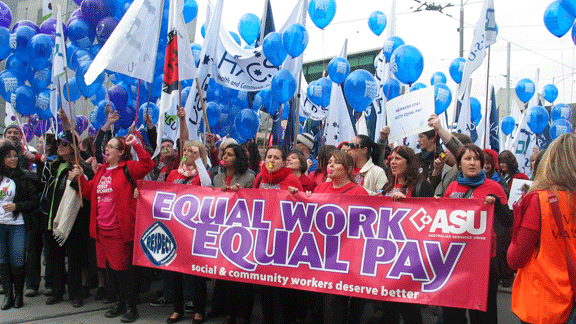Mind the gender gap

Australia’s gender wealth gap has widened dramatically. Young single women have just over half the average assets of their male counterparts, according to a recent study conducted by researchers at Curtin University.
The study examined how the wealth gap between single female and single male households in Australia developed from 2002 to 2010. It found the gender disparity in average wealth across all age groups grew from $18,300 to $47,000.
The largest disparity was for those under 35. An average single man in this demographic had assets worth $120,200 in 2010, $56,700 more than the average woman – a whopping 89 percent more. This is up from an average difference of $9,000 in 2002.
The gap for singles aged 35-55 years jumped from 4 percent to 28 percent, although the disparity between single households over 55 narrowed from 16 percent to 2.5 percent.
This is at least partly a product of the well-documented gender pay gap. In August, the Australian Bureau of Statistics revealed that the gap has soared to more than 18 percent, the highest recorded since the ABS first began collecting the data in 1994. Women earn fewer than 82 cents for every dollar of their male counterparts, down from an average of 85 cents 10 years ago.
This flies in the face of arguments that education is the path to empowerment and equality. As Siobhan Austen, a co-author of the study, told Fairfax, “[D]espite young women now outnumbering young men in our universities quite substantially, we are not seeing a dramatic shift in the gender pay gap or the gender wealth gap. Indeed, they have trended upwards in the last decade.”
The study, Exploring recent increases in the gender wealth gap among Australia’s single households, fills a significant gap in the literature. Previously there had been studies of the gender pay gap. But differences in wages provide only a static picture of economic inequality; an analysis of wealth distribution illustrates how economic inequality accumulates over a woman’s life.
The study used data from the national Household, Income and Labour Dynamics in Australia survey. It found most of the increase in the wealth disparity was linked to the relatively rapid accumulation of housing assets by single men.
There are numerous burdens on women that may constrain their participation in the property market, such as lower wages, concentration in casual work, mortgage discrimination and the fact that single women are more likely than single men to have dependents.
Helen Conway, director of the federal government’s Workplace Gender Equality Agency, was quoted by the Sydney Morning Herald warning that this would have dire consequences for women as they age: “Women are likely to live longer than men and be more reliant on government benefits in retirement, so the fact that this group is financially disadvantaged over the life-course has serious economic and social implications.”
On the one hand, the figures help explain why so many women struggle to be economically independent of men. On the other, they highlight why class demands – for decent pensions, higher wages, good public housing, properly funded hospitals – should be at the forefront of the struggle against women’s oppression.